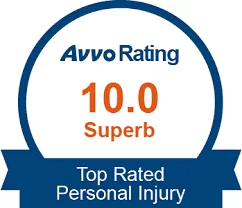As the popularity of rideshare apps such as Lyft and Uber in Atlanta continues to rise, the question of who is ultimately responsible for car accidents occurring in rideshares is asked more often. While Uber and Lyft are generally safe and economic alternatives to traditional taxi services, Uber and Lyft drivers are typically normally people with normal cars—leading to confusion if (and when) an accident occurs.
What makes Uber and Lyft drivers different from traditional taxicabs or other car services? Who is ultimately liable if an accident occurs? We’ve explored these common questions about who is ultimately at fault in rideshare accidents in order to help provide an insight on how to stay safe the next time you call an Uber or a Lyft.
What Makes Uber and Lyft Different From Other Car Services?
Unlike traditional taxi services and other cars-for-hire, Uber and Lyft uses a contracting system for its drivers and their vehicles. This means that a person simply needs to meet the following general requirements to become a driver for either Uber or Lyft:
- Meet the minimum age to drive in your city (Uber) or be at least 21 years old (Lyft);
- Have a valid US Driver’s License;
- Have an eligible 4-door vehicle (and proof of insurance);
- Pass a criminal background check; and
- Pass a driving record check
Unlike traditional taxi services, which can be hailed on the street by pedestrians requiring transportation, those wishing to use Uber or Lyft must download the respective app and “hire” a driver through their smartphone. Transportation via either of these apps is subject to pricing adjustments based on the time of day, the number of drivers available and customer demand, unlike taxi services.
Who is Liable if You are Hit by an Uber or Lyft Driver?
Because of the differences between Uber and Lyft drivers and other car services, it can be confusing to identify who is at fault in car accidents involving rideshare vehicles. As with any car accident case, the person bringing the claim must be able to prove two things in order to be compensated for their injuries: liability (who was at fault) and damages (how badly a person was injured).
As either a passenger, pedestrian or another driver injured by an Uber or Lyft driver, the most straightforward claim would hold the rideshare driver liable for all damages sustained in the accident. Uber and Lyft drivers must have valid personal insurance policies in order to drive for either company, but the question remains—whose insurance policy is respected when an accident occurs?
Fortunately, Uber and Lyft have also recently introduced similar policies for dealing with accidents when they occur with their drivers. They are as follows:
- When the driver is not logged into the Uber or Lyft app, Uber/Lyft provides no coverage.
- When the driver is logged into the app but has not yet accepted a ride request, Uber/Lyft provides liability coverage for any accident that is the fault of the driver, up to $50,000 per person injured in an accident, and $100,000 total injury liability per accident, and $25,000 property damage liability.
- When the driver has accepted a trip/ride, Uber/Lyft provides liability coverage in the amount of $1 million.
The legal liability of the accident is most often with the rideshare driver who caused it, if applicable. But depending on the status of their current ride, it may be Lyft or Uber who ultimately is financially responsible for the damages sustained in an accident. In cases where this may be unclear, contacting an experienced car accident attorney may be necessary to examine the details of your claim and determine who is at fault—and who is paying for your injuries.
Remaining Safe on the Road
In the chaos immediately following a car accident, minimizing the amount of damage caused should be a priority to all parties involved. If you are involved in a car accident, the following actions should be taken as soon as possible:
- Contact emergency personnel immediately to notify them of the crash (especially if injury or fatality has occurred);
- Move out of the direct path of traffic (if possible);
- Assess the physical status of both yourself and others involved in the accident. If first aid is required and is able to be performed, do so as necessary;
- While waiting for emergency personnel to arrive, exchange insurance and contact information with all parties involved in the accident. This is critical to filing a claim against the individual(s) who may be responsible—especially in the case of a rideshare accident;
- Using your phone or a camera, photograph the scene of the accident in detail to use as evidence in your claim. This is especially important in proving the amount of damages you are entitled to;
- Gather the contact information of anyone who witnessed the accident, but may not have been directly involved. This may be helpful in proving the validity of your insurance claim should it be disputed in any way.
- Contact Uber or Lyft directly to report the accident and find out what the next steps may be. This can vary case-by-case, but with proper documentation of the accident and the contact information of all those involved, the process should be greatly simplified.
At Greathouse Trial Law we know firsthand that having a seasoned legal team fighting for you can be the difference between successfully recovering damages and walking away with nothing. If you or a loved one has been injured or killed in an Atlanta car accident involving a rideshare driver, contact us to discuss the details of your claim today.


